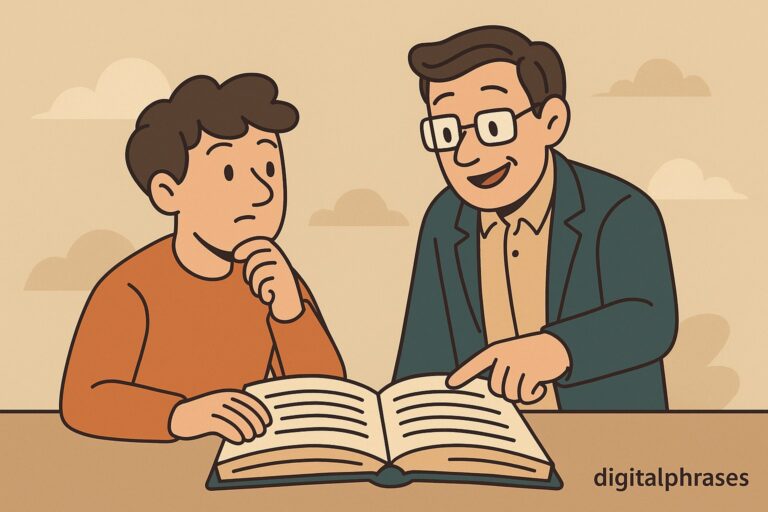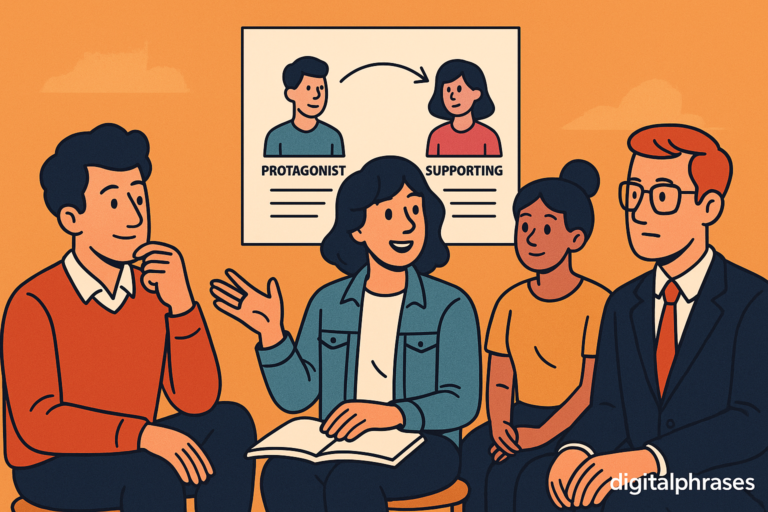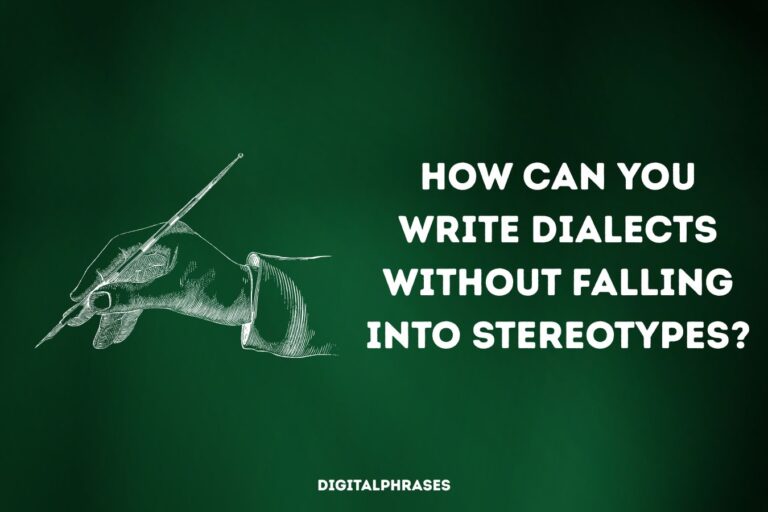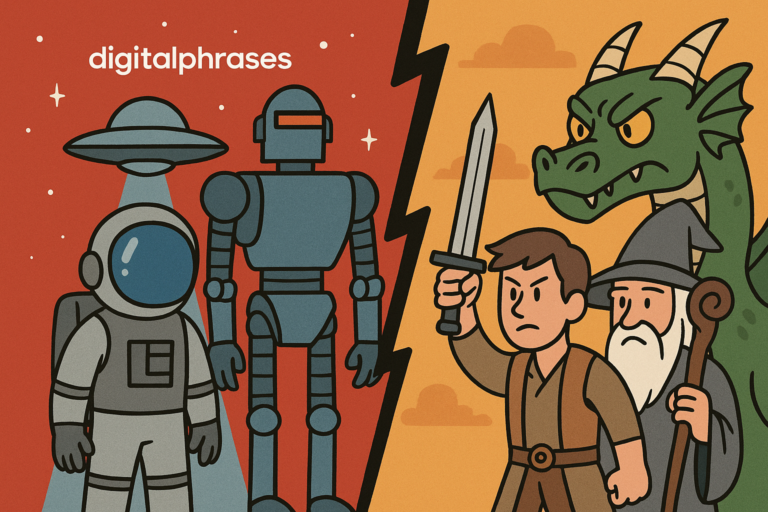How To Create a Negative Character Arc
Not every story needs a hero who rises.
Some characters break.
Some spiral downward with every choice they make. And sometimes, that’s exactly what makes the story unforgettable.
A character arc is the internal journey a character undergoes over the course of a story. It’s the emotional or psychological evolution triggered by the events around them. Most commonly, this arc is positive: a fearful person becomes brave, a selfish person learns to love, a lost soul finds purpose.
But the negative arc flips that script.
Instead of rising, the character descends. They start with potential — even goodness — but as the story unfolds, they make decisions that ultimately erode their morality, identity, or sanity. They reject growth in favor of comfort, power, pride, or delusion.
And in the end, they’re worse off — sometimes personally destroyed, sometimes taking others down with them.
Why write a negative arc?
Because it reflects a darker but very real truth: not everyone changes for the better. Tragedy, corruption, disillusionment — these are powerful emotional territories.
They can hit just as hard as redemption, if not harder.
A well-done negative arc doesn’t just entertain; it warns, haunts, and lingers.
Think of Walter White in Breaking Bad. His journey starts with sympathy — a dying man trying to provide for his family — but gradually, his choices transform him into a ruthless criminal kingpin.
The descent is slow, believable, and chilling.
Now let’s break down what makes a negative arc actually work — structurally, emotionally, and thematically.
The Core Structure of a Negative Arc
A strong negative character arc revolves around one thing: the Lie the character believes.
Everything else — their downfall, their decisions, their consequences — flows from that central false belief.
1. The Lie the Character Believes
The Lie is a flawed worldview.
It’s a belief about themselves, the world, or other people that feels true to them — but isn’t. It’s usually shaped by trauma, fear, or past experience.
It’s what keeps them from becoming their best self.
In a positive arc, the character slowly sees through this Lie and learns the Truth, changing for the better. In a negative arc, they dig deeper into the Lie. They either reject the Truth or twist it until it serves their ego, fear, or desire.
Example: In The Godfather, Michael Corleone begins with a desire to stay out of the family business. But the Lie he believes — that power and control are the only way to protect those you love — slowly takes over. By the end, he becomes the very thing he once opposed.
2. The Truth They Reject
Opposite the Lie is the Truth — the moral or emotional reality the character could embrace. It’s often presented to them through people, events, or internal moments of clarity. But in a negative arc, the Truth is either ignored, rejected, or seen too late.
In tragedy, the Truth may dawn on the character in the final act — but it won’t save them. That’s part of what makes the arc so devastating.
Example: Jay Gatsby, in The Great Gatsby, believes the Lie that money and status can recapture love and fix the past. The Truth — that you can’t relive the past, and that Daisy will never be who he wants her to be — is always right in front of him. He dies still believing the Lie.
3. The Downward Progression
A compelling negative arc isn’t a sudden fall — it’s a slow, believable unraveling. The character has moments where they could change course, but they don’t. Instead, they double down. These turning points matter because they’re always choices.
Here’s a breakdown of that descent:
- Initial Resistance to Change: Early on, the character may question the Lie or face situations that challenge it. But their reaction is to defend or rationalize it.
Example: In Macbeth, when Macbeth first hears the witches’ prophecy, he hesitates. He’s disturbed. But the ambition is already lit. - Moments of Choice: Over time, the stakes rise. The character is pushed — by fear, pride, vengeance, or survival — into decisions that reinforce the Lie.
Example: Anakin Skywalker in Revenge of the Sith chooses the dark side not out of hatred, but fear of losing Padmé. Every decision after that tightens the noose. - Final Embrace of the Lie: In the climax, they fully commit. The Truth is gone — if it was ever real to them at all. The damage becomes permanent.
Example: In Breaking Bad, Walter White famously says, “I did it for me. I liked it.” That’s not just honesty — it’s the moment he stops pretending. He’s not trying to be good. He’s already broken, and he knows it.
The 8 Types of Negative Character Arcs
A negative arc doesn’t just mean the character “turns bad.” The truth is far more layered — and far more interesting. There are different flavors of descent, each with its own emotional resonance and thematic purpose. Some characters become monstrous. Others simply give up. Some were always broken — they just needed the right push.
Let’s break down eight powerful types of negative arcs, with examples and insights into when to use each one.
1. The Disillusionment Arc
The character sees the truth — and loses all hope.
This arc is all about truth as poison. The character starts out with idealism or a sense of purpose, but over time, their illusions are stripped away. What’s left isn’t something they can handle. They don’t fall into evil, exactly — they fall into emptiness.
They may stop caring, abandon their mission, or emotionally shut down. Sometimes they survive, but they’re hollowed out. Sometimes they destroy themselves or fade into irrelevance.
Example: Rick Blaine in Casablanca nearly follows this arc — but turns it around. If he hadn’t sacrificed for Ilsa and her husband, he’d have landed here.
Example (true disillusionment): Winston Smith in 1984. By the end, he doesn’t just lose — he accepts the Lie. He loves Big Brother.
Use this arc if your theme deals with corruption, betrayal, or systems that grind people down. It’s especially effective in dystopian or political stories.
2. The Corruption Arc
The character is tempted — and embraces darkness.
This is the most iconic negative arc. The character starts out with good intentions, or at least neutrality, but temptation comes in. Power, revenge, love, or survival offers them a shortcut — and they take it. The more they get, the more they lose.
This arc is seductive. The descent feels justified at first, but by the time they realize what they’ve become, it’s too late.
Example: Walter White in Breaking Bad. He begins as a desperate man. He ends as a kingpin.
Example: Michael Corleone in The Godfather. Every decision makes sense to him — and yet by the end, he’s a cold, empty shell of a man.
Use this arc to explore how power corrupts, how ego blinds, or how justifications become damnation.
3. The Fall (Tragic Hero Arc)
The character’s fatal flaw brings them down.
Classic.
Greek.
Brutal.
This arc is built on hubris, pride, jealousy, ambition — something inside the character that refuses to bend. Unlike the corruption arc, they’re not tempted into evil. They’re trying to do what they think is right… but their flaw warps every decision.
The fall is often noble, even poetic. These characters don’t always become villains — but they do bring about their own ruin.
Example: Oedipus, who tries to escape fate and ends up fulfilling it.
Example: Macbeth, whose ambition leads to paranoia, murder, and madness.
Example: Anakin Skywalker, again — his flaw is fear of loss.
Use this arc when your theme is fate, downfall, or the cost of unchecked emotion. It’s tragedy in its purest form.
4. The Submission Arc
The character gives in to fear, pressure, or control.
This arc is quieter than others — and all the more painful for it. The character might not want to fall, but they simply don’t have the strength to resist. They surrender to external forces: an oppressive regime, a powerful abuser, a mob mentality, or even a manipulative ideology.
They don’t become evil — but they become complicit. They stop fighting. And that has consequences.
Example: Peter Pettigrew in Harry Potter. He’s weak, not evil. But his cowardice enables Voldemort’s rise.
Example: Gollum in The Lord of the Rings. His submission to the Ring is what ultimately corrupts him.
Use this arc when exploring complicity, cowardice, or the cost of survival at any price.
5. The Obsession Arc
The character is consumed by one idea — and it destroys them.
Obsession arcs are driven by tunnel vision. The character becomes fixated: on revenge, perfection, control, love, justice. Everything else — morality, relationships, self-care — gets sacrificed on the altar of that one goal.
Sometimes they win… but it’s empty. Sometimes they lose everything. Either way, the obsession defines and destroys them.
Example: Captain Ahab in Moby-Dick.
Example: Whiplash’s Terence Fletcher — obsessed with greatness, blind to the damage he causes.
Example: Javert in Les Misérables. His obsession with law over morality leads to his collapse when the two finally collide.
Use this arc when you want a slow burn — a character who unravels not from evil, but from intensity taken too far.
6. The Relapse Arc
The character tries to grow — but fails.
This one hits hardest when the audience has hope. The character begins with a genuine desire to change: to get clean, be better, break free of the past. And for a while, it looks like it might work.
But then… they slip. And once they fall, they fall hard. This arc is perfect for character-driven stories because it adds heartbreak and realism. Change is hard. Not everyone makes it.
Example: BoJack Horseman. Every time he claws toward redemption, something pulls him back — usually himself.
Example: Don Draper in Mad Men. He keeps circling the same drain, even when he wants out.
Use this arc when your story’s about addiction, trauma, or cyclical behavior. It’s intimate, emotional, and devastating.
7. The Burnout Arc
The character gives everything — and loses themselves.
This arc starts with a savior complex. The character wants to fix everything, protect everyone, save the world. But they overextend. They sacrifice, compromise, and push too far for too long — until they collapse. Not from corruption or evil, but from exhaustion and disillusionment.
They might leave the world behind. They might shut down emotionally. Sometimes, they die — not dramatically, but because they couldn’t stop.
Example: Elliot in Mr. Robot. He tries to take down a corrupt system, but loses his mind and identity along the way.
Example: Sarah Connor in Terminator 2 — toeing the line. She nearly burns out into paranoia and violence.
Use this arc when your theme is about the cost of heroism or the limits of self-sacrifice.
8. The Villain Origin Arc
The descent that turns a protagonist into an antagonist.
This one’s special. You’re not just telling the story of a fall — you’re building a villain. The reader watches a character they once related to become the threat in someone else’s story. This arc often crosses over with corruption or obsession, but the key difference is scale: by the end, they’re not just damaged — they’re dangerous.
Example: Light Yagami in Death Note. Starts with a god complex and ends with a body count.
Example: Carrie (Stephen King) — bullied into becoming something monstrous.
Example: Harvey Dent in The Dark Knight: “You either die a hero…”
Use this arc to craft unforgettable antagonists. The best villains are the ones we almost understand.
Method for Creating That Perfect Negative Arc
The Anatomy of the Spiral
A negative character arc isn’t just a fall — it’s a slow spiral. It’s not one bad decision; it’s a series of moments where the character could’ve turned back but didn’t. That’s what makes it powerful. That’s what makes it hurt.
Let’s break it down into three brutal acts, the core skeleton of the spiral:
ACT ONE: BELIEF
The Lie drives them. It helps them survive. Maybe even succeed.
Every negative arc starts with a Lie.
Not a simple untruth, but a deeply rooted belief the character holds about the world or themselves. It’s what they use to justify their behavior — and it’s usually born of pain.
Maybe they believe “people only care about you if you’re useful.”
Maybe they believe “power is the only way to feel safe.”
Maybe they believe “I’m broken — and nothing I do will ever change that.”
At this stage, the Lie works. It keeps them going. Sometimes, it even helps them win — at least temporarily. They get what they want, but only because they’re feeding the flaw. That’s the trick of Act One: make the audience understand why this Lie is so seductive.
Example: In Black Swan, Nina believes that she has to be perfect to be worthy. That obsession pushes her into the lead role. But we already see the cost: isolation, repression, mental decay.
What you do here as the writer:
- Ground the Lie in their backstory. Make it personal.
- Show how it motivates their goals and actions.
- Let the audience empathize — even root for them a little.
- Set up the first cracks in the foundation. Something is off, but they’re still holding it together.
ACT TWO: FRACTURE
The Truth creeps in. They resist. Every choice twists them further.
Now the spiral begins.
The character is forced into situations that challenge their worldview. The Truth — that painful, inconvenient truth — keeps showing up. A better path is offered. A more honest version of themselves tries to speak up.
But they don’t listen.
Every time they could pivot, they double down instead. They lie to others. They lie to themselves. Maybe they lash out. Maybe they retreat. But always, they reinforce the Lie — and pay a bigger price each time.
Example: In Whiplash, Andrew is given chances to step away from Fletcher’s abusive methods. He has a supportive father, brief glimpses of a normal life. But he keeps coming back, convinced that greatness only comes through suffering. That belief becomes his cage.
This act should feel tightening. Pressure builds. The audience begins to dread what’s coming.
What you do here:
- Create moral crossroads. Don’t force the character into failure — make them choose it.
- Mirror the Lie and the Truth in other characters. Let us see what they’re rejecting.
- Let the cost escalate. The more they lean into the Lie, the more damage they cause — to themselves or others.
- Hint at the end. Let the audience feel the fall coming, even if the character doesn’t.
ACT THREE: COLLAPSE
They embrace the Lie fully… and fall. Hard.
This is the climax of the arc — and it shouldn’t be subtle.
By now, the character has had opportunities to change. Maybe they came close. Maybe they even saw the Truth for a moment. But in the end, they either:
- Reject the Truth entirely, or
- Accept it too late, after the damage is done
They cross a line they can’t come back from. It might be a betrayal. A death. A moment of complete moral surrender. Whatever it is, it has weight. The fall should feel inevitable — and irreversible.
Example: In Breaking Bad, Walter’s final full-embrace moment is when he admits to Skyler, “I did it for me. I liked it.” There’s no more pretense. No more justifications. The monster is fully awake.
What you do here:
- Pay off earlier decisions. The collapse should feel like the natural end of the path they’ve walked.
- Make it echo emotionally and thematically. This isn’t just about what happens — it’s about what it means.
- Don’t blink. No last-minute redemption. No deus ex machina. Let the fall land hard.
Build the Character They Could’ve Been
Here’s the trick to making a negative arc unforgettable:
Make us believe — truly believe — that they could’ve been better.
It’s not enough to show a person crumbling. The audience has to feel the loss. They have to grieve the version of that character that never made it.
This is where hope lives. Not in the character, but in us. And then you take it away.
How to do it:
- Give them strengths. Make them charming, talented, brave — but just flawed enough.
- Introduce people who believe in them. Mentors, friends, lovers — characters who see the good.
- Give them real, tangible opportunities to change. Let them get close to the Truth — just enough that the audience thinks, maybe…
Example: Killmonger in Black Panther. He has a righteous cause and a tragic past. You want him to be the hero. You want T’Challa to reach him. But he won’t let go of the Lie: that the only way to fix oppression is through domination.
That final line — “Bury me in the ocean…” — is the ghost of the man he could’ve been.
This isn’t just about character work — it’s about emotional design. Your readers should feel like they’ve lost someone. Because they have.
Let the Plot Push
Character arcs can’t happen in a vacuum. The plot is what tests them. And in a negative arc, the plot is the relentless storm pushing the character toward collapse.
But here’s the key: the push can’t be random. It has to be personal.
You need to build a story that:
- Forces the character to confront their Lie
- Tempts them with the easy path
- Gives them meaningful decisions — and lets them choose wrong
Example: In Nightcrawler, Lou Bloom faces constant ethical crossroads: privacy, manipulation, violence. The system rewards him for making the worst possible choice every time. He’s not pushed by fate — he’s incentivized by a broken world.
What you do:
- Design external conflict that mirrors internal struggle.
- Tie the stakes to their Lie. Let their success depend on staying broken.
- Put moments of clarity right before moments of collapse. Let them see what they’re doing — and do it anyway.
The Payoff: The Fall
This is it — the moment everything breaks. The fall isn’t just about consequences; it’s about closure. The audience has walked this path with the character. Now they need the ending to land.
It must echo.
The climax should hit on three levels:
- Emotional – We feel the personal cost. Loss. Regret. Isolation.
- Moral – We understand the why. The theme is clear. The warning is delivered.
- Narrative – The story ends in a place that only this arc could create.
And above all: no redemption arc cop-outs.
If your story is a negative arc, then commit to it. Don’t pull the rug at the last second. Don’t offer salvation unless that’s earned through failure. Some stories end in ruin — and they should.
Example: In There Will Be Blood, Daniel Plainview wins. He has all the power, all the money, and nothing left. He’s rotted inside. The last line — “I’m finished” — is exactly what it sounds like.
Final Moves as the Writer:
- Make the final decision their decision. No external force should destroy them — they should destroy themselves.
- Leave no loose ends. Thematically, emotionally, narratively — close every loop.
- Linger. Let the final moment sit. Don’t rush it. Let the audience feel the full weight of what’s been lost.
Closing Note
Creating a perfect negative arc isn’t about being edgy or dark for the sake of it. It’s about honesty. It’s about exploring the parts of human nature that don’t heal, that don’t grow, that turn away from truth instead of toward it.
When done right, a negative arc is one of the most powerful tools in storytelling.
It doesn’t give your audience comfort — it gives them clarity.
And that’s unforgettable.
Let them fall.






